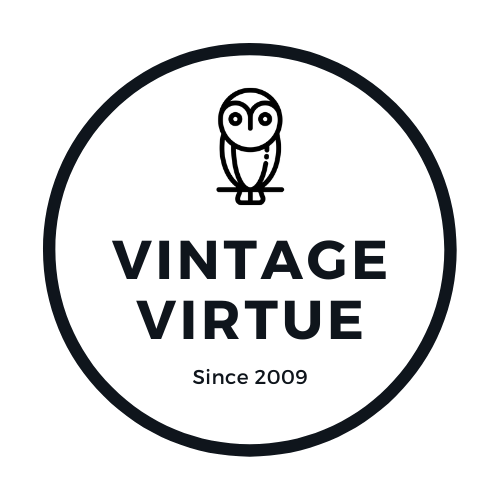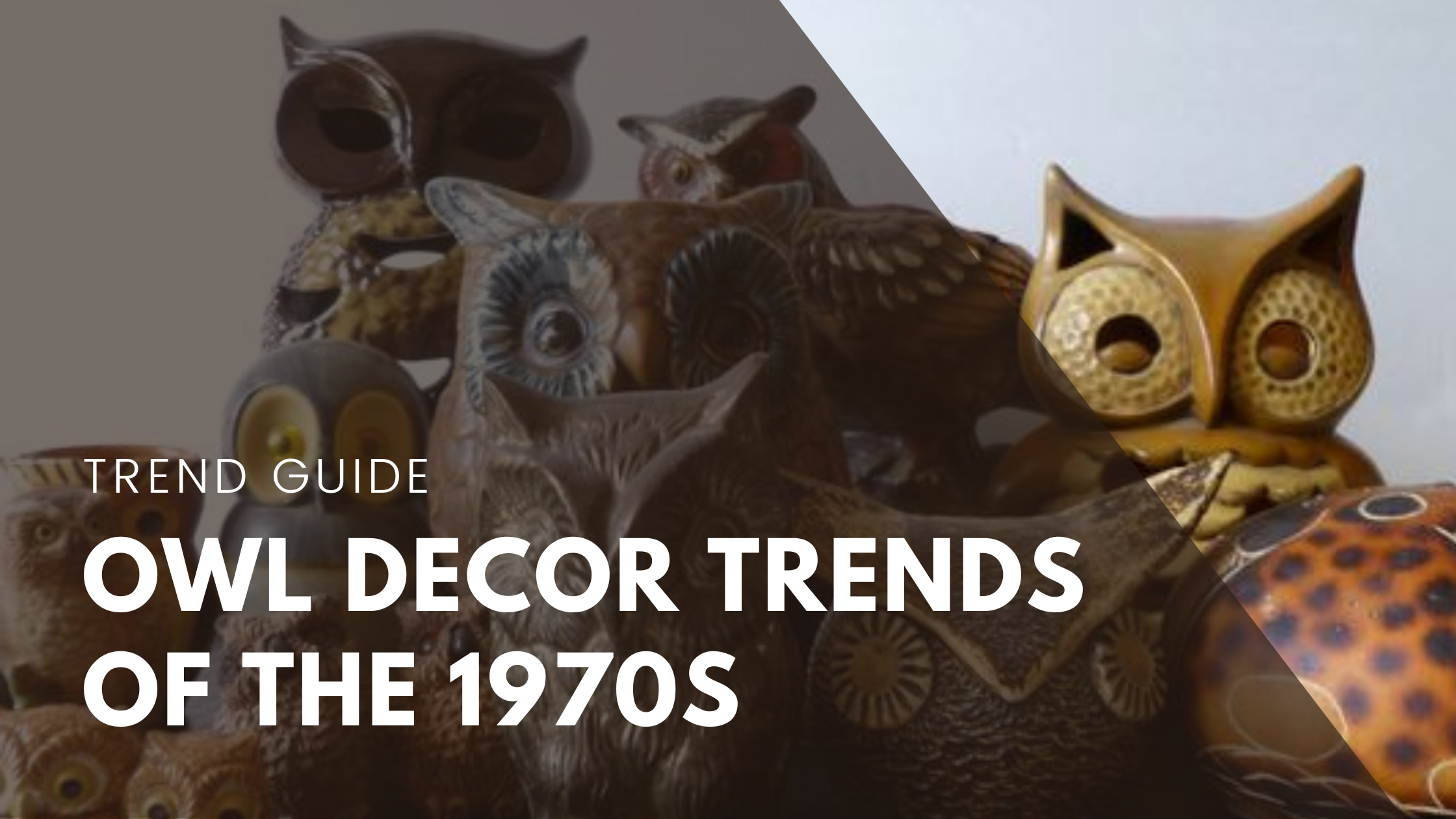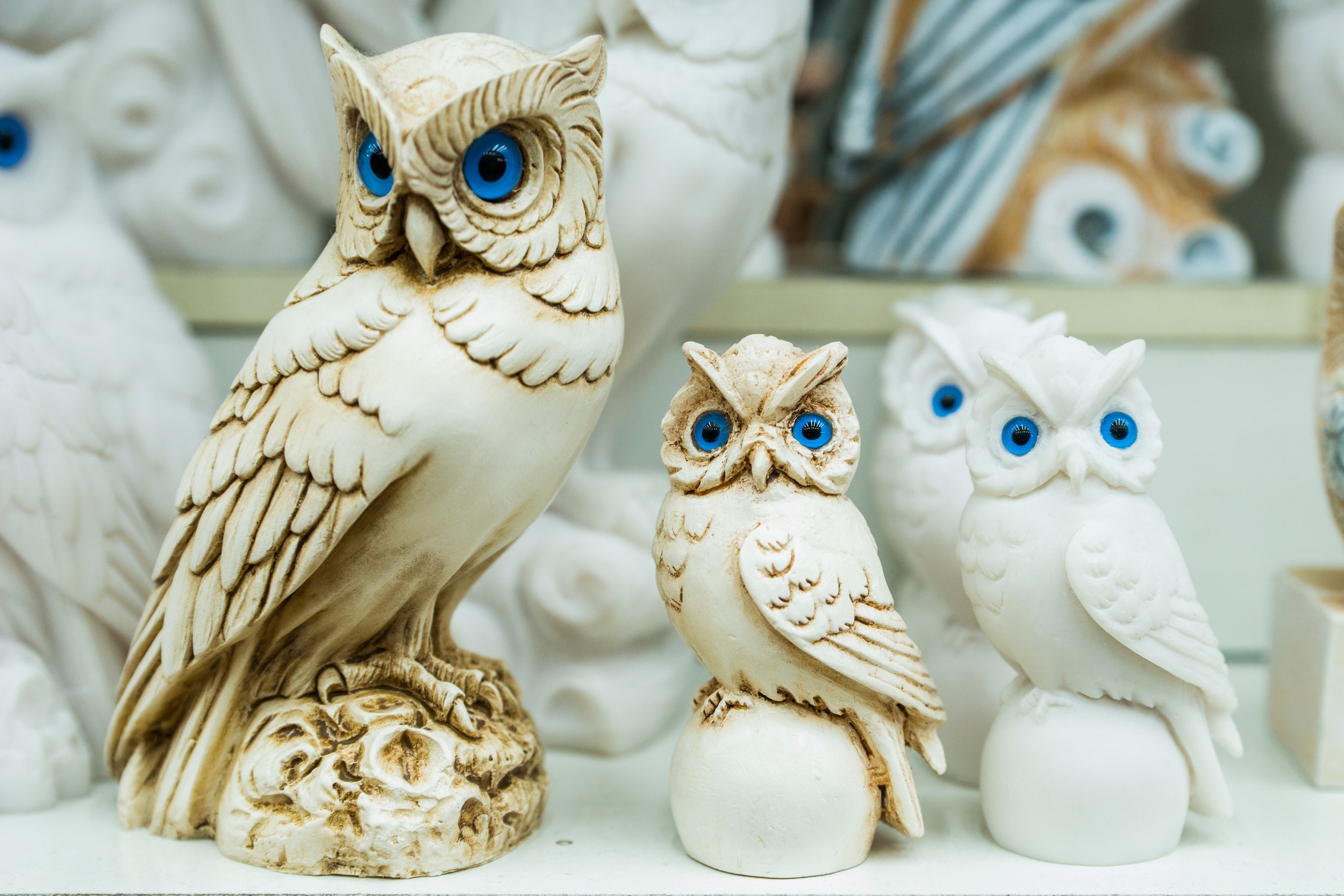The Art of Avian Decor: A Look Back at 1970s Owl Decor Trends
The owl decor trend of the 1970s is a notable design movement that saw the widespread popularity of owl-themed motifs and imagery in interior design, fashion, and popular culture. This trend was characterized by the prominent use of owl designs in various forms, from home decor items to clothing accessories. The trend emerged as part of the broader countercultural movement of the 1970s, which embraced nature, spirituality, and a return to more organic and eclectic design aesthetics.
Key Features of the 1970s Owl Decor Trend
Symbolism and Aesthetics
Owls were associated with wisdom, mystery, and nature, aligning with the countercultural desire for a deeper connection to the natural world and rejecting mass consumerism. The owl's enigmatic qualities resonated with the spiritual and reflective aspects of the era.
Eclectic Design
The 1970s was a time of eclectic design sensibilities, focusing on mixing and matching patterns, colors, and materials. Owl motifs fit well within this aesthetic, as their intricate details and varied color palettes lent themselves to diverse design styles.
Materials and Textures
Owl decor often incorporates materials and textures, including wood, ceramics, macramé, and textiles. The tactile nature of these materials added depth and visual interest to the decor pieces. The popularity of wood paneling and furniture during this era impacted color choices. Warm wood tones like teak and walnut were frequently used and influenced the overall color palette of interiors.
Color Palette
The color palette of the 1970s owl decor trend ranged from earthy and muted tones to vibrant and psychedelic hues. Browns, oranges, greens, and yellows were commonly used, reflecting the natural world and the era's psychedelic influences.
Fashion and Accessories
The owl trend extended beyond home decor to fashion and accessories. Owl motifs appeared on clothing, jewelry, bags, and even footwear. These accessories were seen as a way to express individuality and a connection to nature.
Cultural Influences
The 1970s was a decade marked by a fascination with Eastern philosophies and spirituality. With their association with mysticism, owls fit into this interest in exploring alternative belief systems.
Popular Home Decor Items
During the 1970s, the owl-themed trend made its mark on various home items, infusing spaces with a sense of nature, mysticism, and eclectic charm. Here are some iconic owl-themed home items from that era:
Owl Wall Hangings and Artwork: Colorful and intricately designed owl wall hangings and artwork were popular in 1970s decor. These pieces often featured bold patterns, earthy tones, and a mix of materials like wood, metal, and fabric. During the 1970s, one of the most popular decorative owl versions was the macramé wall hanging. Macrame is made by tying knots in ropes, accented with wooden beads and sticks rather than weaving or knitting. Sailors with knot-tying skills and plenty of rope and time on their hands originated macramé in the 19th century. They made everything from hammocks to belts at sea and sold them in port for extra cash. However, macramé fell out of fashion in the late 19th century when factories could make those goods faster and cheaper. Nevertheless, macramé experienced a resurgence in the 1970s, a golden age for crafts. People were crocheting afghans, sewing needlepoint, decoupaging furniture, and making string art.
Macramé was used to make plant hangers, bedspreads, and anything that could be hung on the wall. There was nostalgia for a time when people made things themselves instead of buying everything. Macramé owls combined a love of nature with the rising handicraft movement. They made their macramé owls in connection with environmentalism, individualism, and a romance for handmade items.
Ceramic Owl Figurines: Ceramic owl figurines were a staple of 1970s decor, often featuring hand-painted details and textured glazes. These figurines ranged from small tabletop accents to larger sculptures that added personality to living spaces.
Owl Lamps: Owl-shaped lamps combine functional lighting with whimsical design. These lamps often featured owl-shaped bases or owl motifs on lampshades, casting a warm and cozy glow in bedrooms and living rooms.
Owl Planters: Planters in the shape of owls were a charming addition to indoor gardens. These planters were designed to hold small potted plants and added a touch of nature to interior spaces. Owl planters came in a wide range of designs, reflecting the eclectic design sensibilities of the 1970s. Common design elements included large, round eyes, exaggerated beaks, and intricate feather patterns. Some owl planters were more realistic, while others leaned into a whimsical or cartoonish aesthetic.
Owl Clocks: Owl-themed clocks were functional timepieces and decorative accents. These clocks often incorporated intricate designs and mixed materials like wood and metal. Owl wall clocks came in various sizes, from smaller, more decorative versions to larger clocks that made a statement on a wall. The size often determined whether the clock was meant to be a functional timepiece or more of a decorative accent.
Owl Decorative Pillows: Decorative pillows featuring owl motifs were a fun way to incorporate the trend into living rooms and bedrooms. These pillows often showcased bold colors and playful patterns.
Owl Kitchen Accessories: Owl-themed kitchen accessories included salt and pepper shakers, mugs, and even cookie jars. These accessories added a touch of whimsy to cooking and dining spaces. Owl kitchen accessories were typically made from various materials, including ceramics, stoneware, porcelain, and plastic. These materials allowed for intricate detailing and creative design elements.
Ceramic Cookie Jars: One of the most iconic owl kitchen accessories of the 1970s was the ceramic owl-shaped cookie jar. These cookie jars featured a removable lid often adorned with an owl's head and large, round eyes. Some had textured or hand-painted details for added charm.
Salt and Pepper Shakers: Owl-themed salt and pepper shakers were popular additions to dining tables. These shakers came in various shapes and sizes, with the owls often perched on tree stumps or branches. Each shaker typically had one or two small holes for dispensing the salt or pepper.
Mugs and Cups: Owl mugs and cups were designed with whimsical owl motifs. These items added a touch of personality to morning coffee or tea routines. The owl designs ranged from detailed and realistic to abstract and playful.
Owl Tapestries: Textile wall hangings or tapestries featuring owl designs were embraced to add texture and visual interest to walls. These tapestries often featured intricate patterns and earthy tones.
Owl Candles and Candle Holders: Owl-shaped candles and candle holders were often placed on mantels, coffee tables, dining tables, and shelves as decorative accents. They added whimsy and personality to living spaces and were especially popular in living rooms and bedrooms.
Owl Decorated Furniture: Some pieces featured owl-themed designs, such as carved owl motifs on headboards or intricate patterns on upholstery.
Popularity and Enduring Influence
The owl decor trend enjoyed immense popularity during the 1970s, and its influence continued in various forms throughout the years. Vintage owl decor from this era is often nostalgically appreciated, and specific design elements have made periodic comebacks in contemporary design trends.
The 1970s owl decor trend represents a unique blend of cultural influences, countercultural ideals, and a desire for individual expression. It is a testament to how design trends can reflect an era's broader social and cultural sentiments, and it continues to evoke a sense of nostalgia and charm among those who remember or appreciate this distinct design movement.



